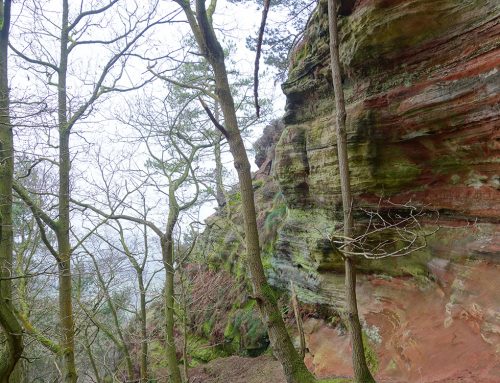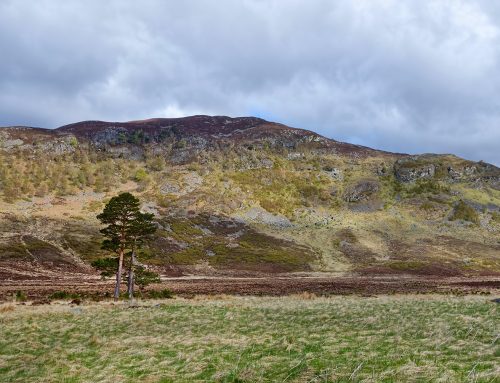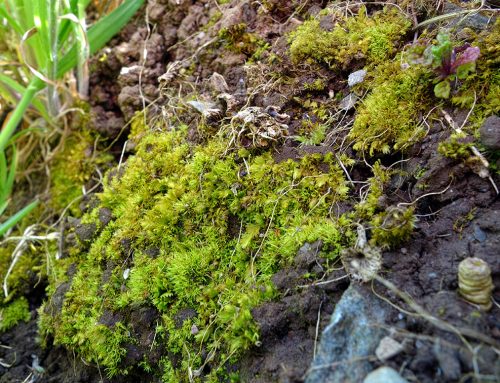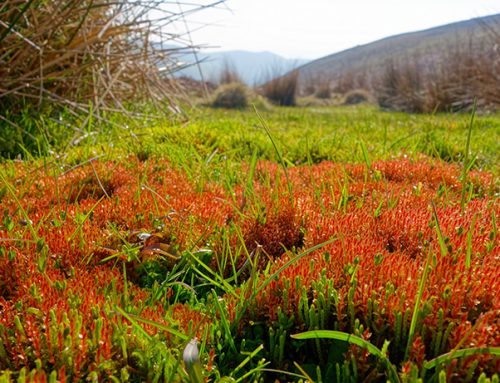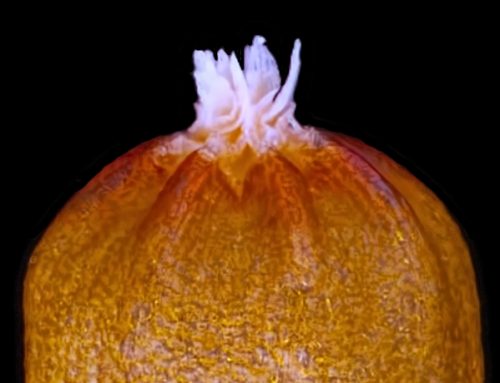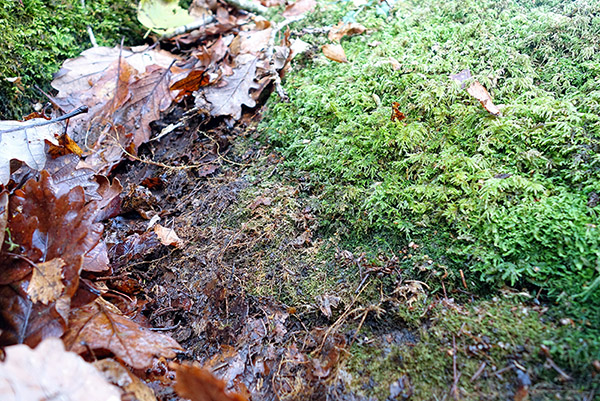
This is the last known spot where Hageniella micans grew at Coed Aber Artro, now with detrital build-up, half-dead Heterocladium heteropterum and bourgeoning Isothecium myosuroides
Coed Aber Artro, with its deep wooded ravine, has long been celebrated for its oceanic bryophytes, with the first notable discoveries made by the outstanding bryologist D.A. Jones in 1901. A few years later, in 1909, he found Hageniella micans (Sparkling Signal-moss), new for Wales. When a large part of the ravine at Coed Aber Artro was flooded for a hydroelectric scheme in the 1930s, colonies of the rare moss are known to have been lost and for many years it was feared extinct. Then, in May 1999, P.M. Benoit found a small amount on a riverside rock-face, which was refound in August 2003. With the help of a photograph taken at the time, the precise spot was revisited in November 2014 during a bryophyte survey commissioned by Plantlife, but the plant had gone. The rocky crevice where it grew had partly filled with detritus and become covered with leaves. A careful search of all other accessible habitat at Coed Aber Artro drew a blank and it appears that the moss no longer survives here. This may be the fate of many species that presently cling on at sites in tiny amounts, susceptible as they are to chance events. Hageniella is now known from just two sites in Wales, at both in very small amounts.

